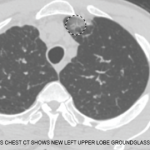That, in a nutshell, was the impetus for change. Gone were the days when rheumatologists were bystanders, content to simply catalog patients as the disease took its course. Effective therapeutics caused us to set our eyes higher, toward earlier and more aggressive therapies that may minimize damage, or even halt the cycle of inflammation before damage could take place.
Advances in the treatment of rheumatoid arthritis were quickly followed by advances in the treatment of other rheumatic diseases, and with these successes came a need to identify patients at ever-earlier stages of disease, when they may benefit most from our interventions. Thus came a parade of new scoring systems, with their progressively more complex methods of discerning who may be a good target for clinical trials in systemic lupus erythematosus, Sjögren’s syndrome, scleroderma, inflammatory myopathies and other diagnoses that are so desperately in need of therapeutic advances.
This search for the perfect criteria shows no evidence of slowing down. There is an ongoing, multinational effort to revise the way we classify the systemic vasculitides. The classification criteria for both systemic lupus erythematosus and Sjögren’s syndrome are already being re-revised. Given the grumblings about the new scleroderma classification criteria, which still fail to capture all patients that we would like to enroll in clinical trials of systemic sclerosis, I would not be surprised if these criteria also saw an early death.
Advances in therapeutics from this point forward may depend on lumping patients together based on mechanism rather than clinical features.
Pornography & Other Problems
In 1964, Justice Potter Stewart, opining on the definition of pornography, noted, “I shall not today attempt further to define the kinds of material I understand to be embraced within that shorthand description; and perhaps I could never succeed in intelligibly doing so. But I know it when I see it. …”4
Thus, Justice Stewart captured the state of the art for classification systems in rheumatology. We rely on the opinions of experts. Remarkably little has changed in our approach toward classifying patients since the days of the American Rheumatism Association. Inevitably, we depend on experts to teach us how to lump. Even modern approaches, such as 1000minds, are fueled by expert opinion, albeit many more experts than were previously possible.5
This reflects a central problem with our approach. Lumping patients together based on clinical criteria may not reflect key differences in pathogenesis. On the other hand, we cannot create classification criteria that are so restrictive that we have no patients left to enroll in our studies. Thus, we have become accustomed to clinical trials that use the same drug for all patients with uveitis, regardless of etiology. We have also become accustomed to studies that examine ANCA-associated vasculitis, which is generally translated as “severe granulomatosis with polyangiitis, microscopic polyangiitis and renal-limited vasculitis, but not eosinophilic granulomatosis with polyangiitis,” because we have to include all of these subsets to reach the necessary N.


